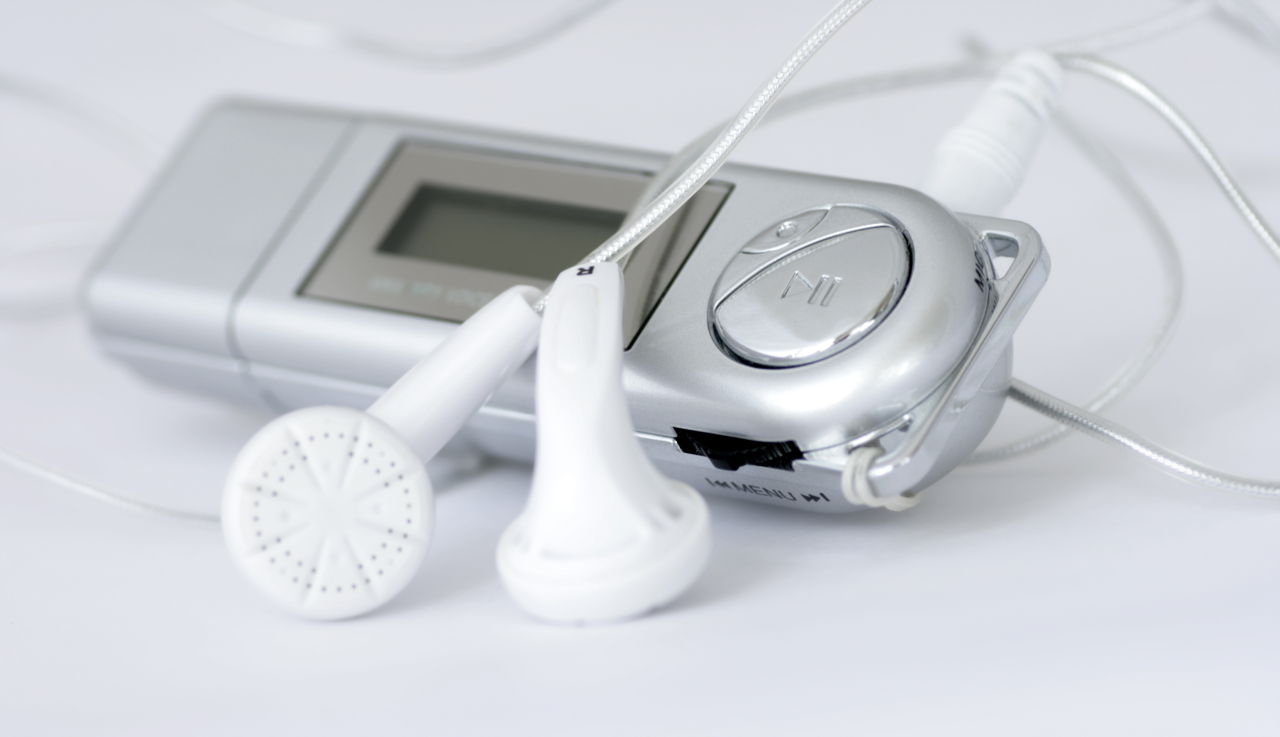Home>Production & Technology>MP3>What Is An MP3?


MP3
What Is An MP3?
Modified: January 22, 2024
Learn all about MP3s, the popular audio format used for storing digital music. Discover how MP3s work, their advantages, and how to play them on different devices.
(Many of the links in this article redirect to a specific reviewed product. Your purchase of these products through affiliate links helps to generate commission for AudioLover.com, at no extra cost. Learn more)
Table of Contents
Introduction
Welcome to the world of MP3! In this digital age, where music is a constant companion, MP3 has transformed the way we listen to and enjoy our favorite tunes. Whether you’re a music enthusiast, a casual listener, or a tech-savvy individual, you’ve likely encountered the term “MP3” countless times. But what exactly is an MP3? In this article, we will delve into the world of MP3, exploring its definition, history, functionality, advantages, and more.
An MP3, which stands for “MPEG-1 Audio Layer 3,” is a popular digital audio encoding format. It revolutionized the way music is stored and transmitted, offering a significant improvement over traditional audio formats. The MP3 format compresses audio data while maintaining high audio quality, allowing for efficient storage and hassle-free sharing across various devices.
The inception of MP3 technology sparked a paradigm shift in the music industry, giving rise to the digital music revolution. Before MP3s, physical media like cassettes and CDs dominated the music landscape. But with the advent of MP3s, music lovers gained the ability to carry thousands of songs in their pockets with portable MP3 players, paving the way for the rise of iPods and other portable music devices.
The magic of MP3 lies in its compression algorithm, which reduces the file size of audio data without compromising the quality of the sound. This compression is achieved through a process called “lossy compression,” where the format selectively removes unnoticeable audio frequencies and data redundancies. As a result, MP3 files are significantly smaller than their original counterparts while maintaining impressive audio fidelity.
One of the key advantages of the MP3 format is its compatibility and accessibility. MP3 files can be played on a wide range of devices, including smartphones, tablets, computers, and dedicated MP3 players. This universality has made MP3 the go-to format for music sharing and distribution, as it ensures the broadest possible audience can enjoy the content.
However, it is essential to acknowledge that MP3 is not without its limitations. The compressed nature of MP3 files means that there is a slight loss in audio quality compared to the original, uncompressed version. Audiophiles and music purists may argue that the fidelity of MP3s can’t match that of lossless formats like FLAC. Additionally, the compression process may occasionally introduce artifacts and distortions in the audio.
In the next sections, we will delve into the history of MP3 technology, explore its inner workings, discuss its advantages and disadvantages, and examine its popular uses across different industries. So, let’s embark on this sonic journey and uncover the fascinating world of MP3!
Definition of MP3
MP3, or MPEG-1 Audio Layer 3, is a popular digital audio encoding format that revolutionized the way we consume and share music. It employs a compression algorithm to reduce the file size of audio data while maintaining a satisfactory level of audio quality. This format has become the standard for audio files due to its high compatibility and widespread use.
The MP3 format uses a process known as “lossy compression” to achieve its small file size. Lossy compression selectively removes audio frequencies and data redundancies that are less likely to be noticed by the human ear. By doing so, it significantly reduces the file size without drastically compromising the perceived audio quality. This makes MP3 files highly efficient for storage and transmission.
MP3 files are created through a process called audio coding, where the original audio data is analyzed, processed, and compressed into a more compact form. During this coding process, various factors are taken into account, such as the bit rate, sample rate, and the file’s encoding parameters, to determine the level of compression and resulting audio quality.
When it comes to the technical specifications of an MP3 file, it typically consists of an audio stream encoded in the MPEG audio format. The encoding process involves dividing the audio data into frames, with each frame containing a fixed amount of audio information. These frames can then be played sequentially to reproduce the audio track.
MP3 files are characterized by their “.mp3” file extension, which is often associated with audio files. They can be played and enjoyed on a wide range of devices, including smartphones, tablets, computers, and dedicated MP3 players. Compatibility with different operating systems, media players, and streaming platforms has contributed to the popularity and widespread use of the MP3 format.
It’s important to note that MP3 is an audio-only format and doesn’t support video or other multimedia elements. However, it has become the dominant format for distributing and sharing music online, both legally and through various unauthorized channels.
Overall, the MP3 format has significantly impacted the way we consume and enjoy music. Its compression capabilities have made digital music more accessible and portable, allowing us to carry our entire music libraries in our pockets. The MP3 encoding format has stood the test of time and remains a cornerstone of the digital music industry.
History of MP3
The history of MP3 dates back to the early 1980s when the Moving Picture Experts Group (MPEG), a committee formed by the International Organization for Standardization (ISO) and the International Electrotechnical Commission (IEC), began exploring ways to efficiently compress digital audio. Their goal was to develop a format that could store audio data with minimal loss in quality while reducing file size for easy storage and transmission.
In 1991, the MPEG-1 Audio Layer 3 format, popularly known as MP3, was officially introduced. This format, with its groundbreaking compression algorithm, quickly gained traction and became a game-changer in the world of digital audio.
The development of the MP3 format involved several key contributors. Karlheinz Brandenburg, a German electrical engineer and mathematician, played a crucial role in the creation of this revolutionary audio encoding technology. Brandenburg and his team at the Fraunhofer Institute for Integrated Circuits in Germany worked tirelessly to develop the algorithms and techniques that make MP3 compression possible.
Initially, MP3 technology faced resistance from the music industry due to fears of copyright infringement and piracy. However, in the mid-1990s, the emergence of the internet and advancements in digital audio technology paved the way for the widespread adoption of MP3.
It was during this time that the first MP3 players started to enter the market. One of the most iconic early MP3 players was the Diamond Rio PMP300, released in 1998. With a capacity of 32MB, this portable device allowed users to carry up to an hour of high-quality music in their pockets.
The rise of file-sharing platforms, most notably Napster, further popularized MP3s. Napster, founded in 1999, facilitated the sharing of MP3 files across the internet, enabling music enthusiasts to explore and discover an extensive library of songs. This led to a significant shift in the music industry, challenging the traditional distribution models and paving the way for digital music stores and streaming services.
The year 2001 marked a significant milestone in the history of MP3 technology with the release of Apple’s iPod, which became synonymous with portable music players. The iPod, along with the iTunes Store, offered a seamless user experience and convenient access to an extensive library of MP3 files.
Over the years, the popularity of MP3 has remained steadfast, despite the emergence of other audio formats and advancements in technology. MP3 has become the de facto standard for digital audio, with its widespread compatibility and ease of use on a wide range of devices.
As technology has progressed, newer and more advanced audio formats, such as AAC and FLAC, have entered the scene. However, MP3 continues to thrive, proving its adaptability and resilience in the ever-evolving digital music landscape.
The history of MP3 is a testament to the power of innovation and its ability to shape the way we consume and experience music. It has not only transformed the music industry but has also played a significant role in the digital revolution.
How MP3 Works
Understanding how MP3 works requires diving into the technical aspects of digital audio encoding. At the core of the MP3 format lies a sophisticated compression algorithm that balances file size reduction with audio quality preservation.
The MP3 compression process utilizes a method called “perceptual coding” to remove audio data that is least likely to be noticed by the human ear. By analyzing the psychoacoustic properties of the music, such as the sensitivity of human hearing to different frequencies and the masking effect of one sound on another, MP3 encoding can selectively discard information without significantly impacting perceived sound quality.
The encoding process starts with breaking down the audio signal into small chunks called “frames.” Each frame consists of samples that represent the audio waveform at specific points in time. These samples are then transformed from the time domain to the frequency domain using a mathematical operation called the Fourier transform.
Once in the frequency domain, the audio signal is divided into several frequency bands, with the lower bands capturing the essential components of the sound while the higher bands focus on the finer details. This division allows for more accurate analysis and compression of the audio data.
Next, a process known as “quantization” takes place, where the audio data is scaled down to a lower resolution. This reduction in resolution helps eliminate unnecessary details and reduces the overall file size. The quantization process introduces some loss of audio accuracy, but the impact is usually imperceptible to the human ear.
Furthermore, MP3 encoding utilizes a technique called “bit-rate control” to achieve variable bit rates and optimize file size. This means that the amount of data allocated to encode different parts of the audio signal can vary based on the complexity of the sound. More data is allocated to represent complex sections with a high level of detail, while simpler parts may receive fewer bits.
The resulting MP3 file is a compressed representation of the original audio, with a significantly reduced file size. Despite the compression, the MP3 format aims to retain audio quality that is acceptable for casual listening. However, it is worth noting that MP3 is a lossy compression format, meaning there is some loss of audio fidelity compared to the original, uncompressed version.
To decode an MP3 file and turn it back into an audible audio signal, the decoding process reverses the steps taken during encoding. The frames are reconstructed, and the compressed audio data is expanded back to its original form. Although some detail may be lost during compression, the result is usually close enough to the original audio to be undetectable to the average listener.
Overall, the MP3 format’s intricate encoding and decoding process make it possible to achieve a balance between file size reduction and acceptable audio quality. Its compression techniques have revolutionized the way we store, transmit, and consume digital audio, making MP3 the go-to standard for music lovers worldwide.
Advantages and Disadvantages of MP3
The MP3 format has played a significant role in the digital music revolution, offering numerous advantages that have made it the preferred choice for audio encoding. However, like any technology, MP3 also has its limitations and drawbacks. Let’s explore the advantages and disadvantages of MP3.
Advantages of MP3:
- File Size Reduction: One of the key advantages of MP3 is its ability to significantly reduce file sizes while maintaining acceptable audio quality. This compression enables users to store and transfer large collections of music more efficiently.
- Compatibility and Accessibility: MP3 files can be played on a wide range of devices, including smartphones, tablets, computers, and dedicated MP3 players. This universality ensures that music enthusiasts can enjoy their favorite songs without limitations.
- Easy Sharing and Distribution: MP3 facilitates effortless sharing and distribution of music. With the rise of online platforms and digital music stores, it has become incredibly simple for artists, record labels, and listeners to share and sell their music globally.
- Convenience and Portability: MP3’s small file size and compatibility with portable devices have revolutionized the way we listen to music. With MP3 players or smartphones, music lovers can carry thousands of songs in their pockets and enjoy their favorite tracks anytime, anywhere.
- Broad Range of Bit Rates: MP3 allows for versatility in choosing the level of audio quality and file size. With various bit rate options, users can make trade-offs between file size and audio fidelity according to their preferences and available storage space.
Disadvantages of MP3:
- Lossy Compression: As a lossy audio format, MP3 does compromise some audio quality compared to the original, uncompressed source. Audiophiles and music purists may argue that the fidelity of MP3 files is not on par with lossless audio formats like FLAC.
- Potential Artifacts: The compression process in MP3 encoding can introduce artifacts, such as audible distortions, especially at low bit rates. These artifacts can impact the listening experience, although they are usually minimal and often go unnoticed to the average listener.
- Limited Dynamic Range: MP3’s compression algorithm may reduce the dynamic range of audio, resulting in less noticeable differences between soft and loud sounds. This limitation can affect the overall depth and richness of the listening experience.
- Legal and Ethical Considerations: The easy sharing and distribution of MP3 files have raised concerns about copyright infringement and the unauthorized distribution of copyrighted music. It is crucial to respect intellectual property rights and ensure that music is obtained through legal and ethical means.
Despite these disadvantages, the widespread adoption and longevity of MP3 demonstrate its enduring appeal and usefulness in the digital music realm. It remains a popular choice among music enthusiasts, providing a balance between convenience, storage efficiency, and acceptable audio quality.
Popular Uses of MP3
The MP3 format has had a profound impact on the way we consume and enjoy music, leading to a multitude of popular uses across various industries. From personal entertainment to professional applications, let’s explore some of the most common uses of MP3:
- Personal Music Libraries: MP3 has revolutionized how we store and organize our music collections. With MP3 files, music enthusiasts can create vast digital libraries that can be easily managed on computers, portable devices, and cloud storage platforms.
- Portable Music Players: MP3 players, such as iPods and other handheld devices, have become immensely popular for their ability to carry thousands of songs in a pocket-sized device. MP3 compatibility ensures that users can enjoy their favorite tracks anytime, anywhere.
- Online Streaming and Digital Music Stores: The rise of streaming platforms and digital music stores, like Spotify, Apple Music, and Amazon Music, has been fueled by the MP3 format’s ubiquity and widespread compatibility. These platforms allow users to access an extensive library of MP3 tracks for instant streaming or downloading.
- Podcasting: MP3 has served as the go-to format for podcasting, enabling content creators to produce and distribute audio shows to a wide audience. The small file size of MP3 files makes it easy to upload, download, and stream podcast episodes.
- Audio Books: MP3 has opened new avenues in the world of audio books. With MP3 format, publishers can efficiently deliver lengthy audiobooks to listeners. The compressed files allow for easier distribution and hassle-free listening.
- Ringtone Customization: MP3 files have been widely used for creating custom ringtones for mobile phones. Users can select their favorite MP3 tracks and set them as personalized ringtones, allowing for unique and personalized phone notifications.
- Music Production and Sampling: In music production and remixing, MP3 has become a common format for creating and sharing work. Its small file size allows artists, DJs, and producers to exchange samples, collaborate, and manipulate audio files more efficiently.
- Education and Language Learning: MP3 has found applications in educational settings, particularly for language learning. Audio lessons, language tutorials, and pronunciation guides can be easily distributed and accessed in MP3 format, facilitating flexible and convenient learning experiences.
- Background Music in Media: MP3 is widely used in the entertainment industry for background music in movies, commercials, videos, and video games. Its efficient storage and compatibility make it easy to integrate high-quality audio into various media productions.
The versatility and accessibility of the MP3 format have contributed to its broad range of uses, impacting numerous aspects of our daily lives. From personal enjoyment to professional applications, MP3 continues to shape the way we experience and interact with music and audio content.
Future of MP3 Technology
The MP3 format has undeniably left an indelible mark on the music industry and digital audio landscape. However, as technology continues to evolve rapidly, it’s worth exploring the future of MP3 and its potential trajectory. While newer audio formats have emerged, MP3 remains a relevant and widely adopted format. Here are some aspects to consider regarding the future of MP3 technology:
- Continued Use and Compatibility: Despite the emergence of alternative audio formats, MP3 is expected to remain in use and widely compatible with various devices and platforms. Its long-established presence and broad compatibility ensure that MP3 files will still find their place in the digital music ecosystem.
- Improvements in Encoding Efficiency: As technology progresses, improvements to MP3 encoding algorithms and techniques may emerge. These advancements could lead to a more efficient compression process, allowing for even smaller file sizes without significant compromises in audio quality.
- Integration with New Technologies: MP3 is likely to integrate with emerging technologies, such as Internet of Things (IoT) devices, voice assistants, and smart speakers. With the proliferation of these devices, the demand for MP3-compatible audio content will continue to grow, ensuring the persistence of the format.
- Shift Towards Higher-Quality Formats: While MP3 remains a popular format for casual listening, there is a growing interest in higher-fidelity audio formats, such as FLAC and DSD. However, advancements in compression and storage technologies may lead to the development of new MP3 variants that offer improved audio quality while retaining the format’s small file size advantage.
- Hybrid Formats: We may see the emergence of hybrid audio formats that combine the benefits of MP3’s compression with the audio quality of lossless formats. These hybrid formats could strike a balance between file size efficiency and audio fidelity, catering to both casual listeners and audiophiles.
- Enhanced Metadata and Interactive Features: The future of MP3 technology might involve enhanced metadata capabilities, allowing for more detailed and interactive music experiences. This could include embedded lyrics, album artwork, interactive links, and additional contextual information within MP3 files.
- Evolution in Content Delivery: With the proliferation of streaming services and the increasing preference for cloud-based storage, the delivery and distribution of MP3 files are also likely to evolve. Cloud-based streaming platforms may become the primary method for accessing and enjoying MP3 music, providing a seamless and convenient user experience.
- Integration with Virtual Reality (VR) and Augmented Reality (AR): As VR and AR technologies continue to advance, MP3 may find applications in immersive audio experiences. MP3’s small file size and widespread compatibility make it an ideal format for delivering spatial audio content in virtual and augmented reality environments.
While the future of MP3 technology may see the emergence of newer, more advanced audio formats, MP3 is expected to remain a relevant and widely used format for the foreseeable future. Its compatibility, efficiency, and ubiquity ensure its continued presence in the digital music and audio landscape, catering to the diverse needs and preferences of music enthusiasts worldwide.
Conclusion
The MP3 format has revolutionized the way we consume, share, and enjoy music in the digital age. From its humble origins to its widespread adoption, MP3 has become an integral part of our daily lives, enhancing the portability, accessibility, and convenience of music.
Throughout this article, we have explored the definition, history, functionality, advantages, and popular uses of MP3. It is clear that MP3’s compression algorithm, based on perceptual coding, has significantly reduced file sizes while maintaining acceptable audio quality. This breakthrough has empowered music enthusiasts to carry their entire music libraries in their pockets and share their favorite tracks with ease.
Despite its limitations as a lossy audio format, MP3 remains the go-to choice for personal music libraries, portable devices, online streaming platforms, and various professional applications. It has opened new avenues for podcasting, audiobooks, language learning, and media production, among others.
Looking into the future, MP3 is expected to continue its relevance and compatibility within the evolving landscape of audio technology. Improvements in encoding efficiency, integration with new technologies, and the potential for hybrid variants could shape the future path of MP3. It is likely to coexist alongside emerging audio formats, catering to a wide range of audio enthusiasts.
In conclusion, MP3 has redefined the way we listen to and interact with music. Its impact on the music industry, technology, and our daily lives cannot be overstated. MP3 has democratized music consumption, allowing individuals to curate their own personalized soundtracks and providing artists and content creators with a global platform to share their talent.
Whether you’re an avid music lover, a podcast enthusiast, or a professional in the music industry, MP3 has undoubtedly played a part in enhancing your audio experience. So, let’s embrace the continued presence of MP3 and appreciate the transformative power it holds in our musical journeys.











